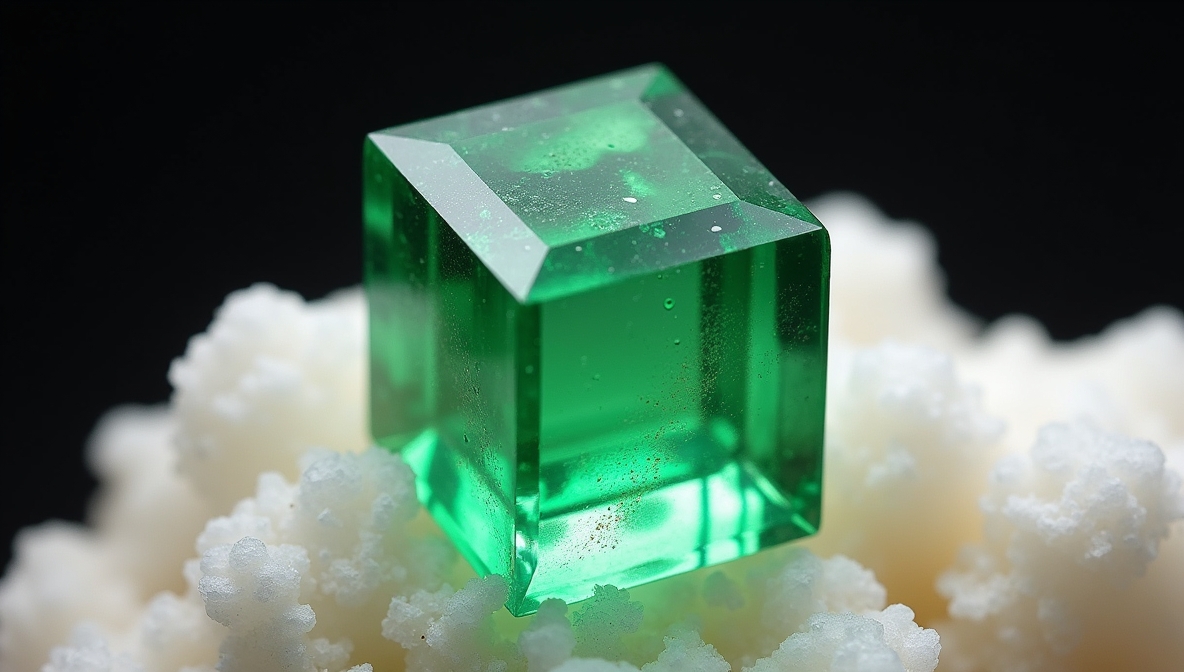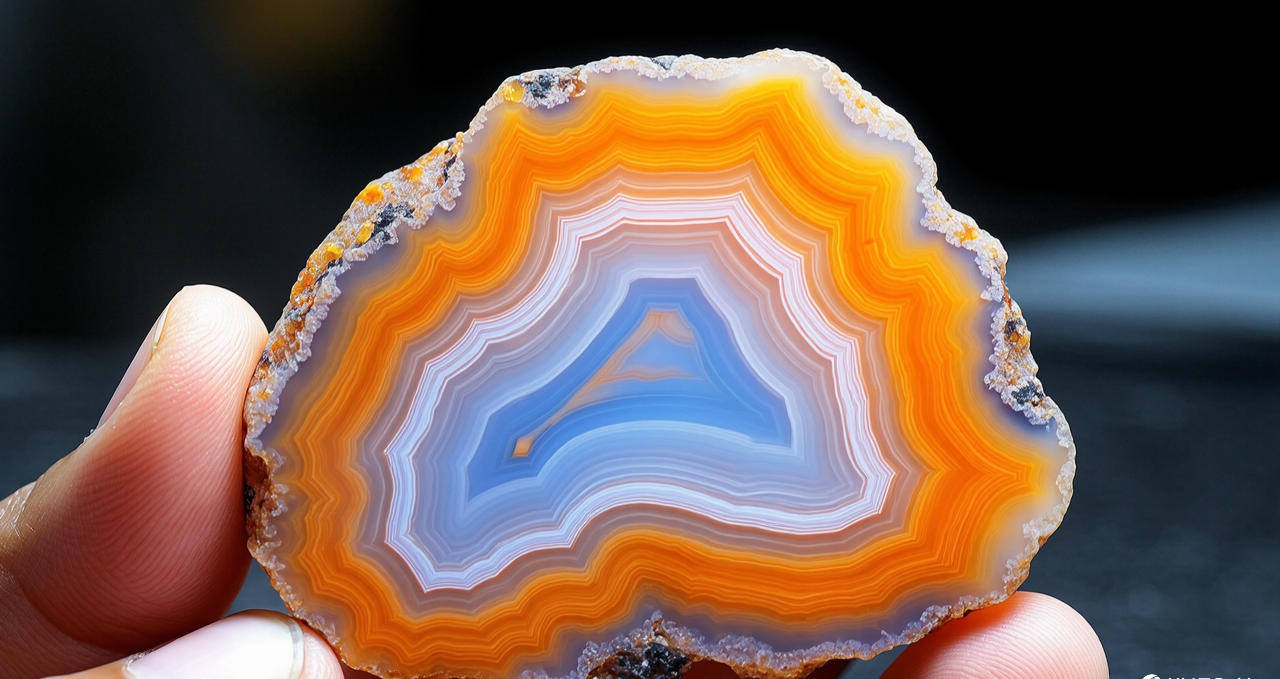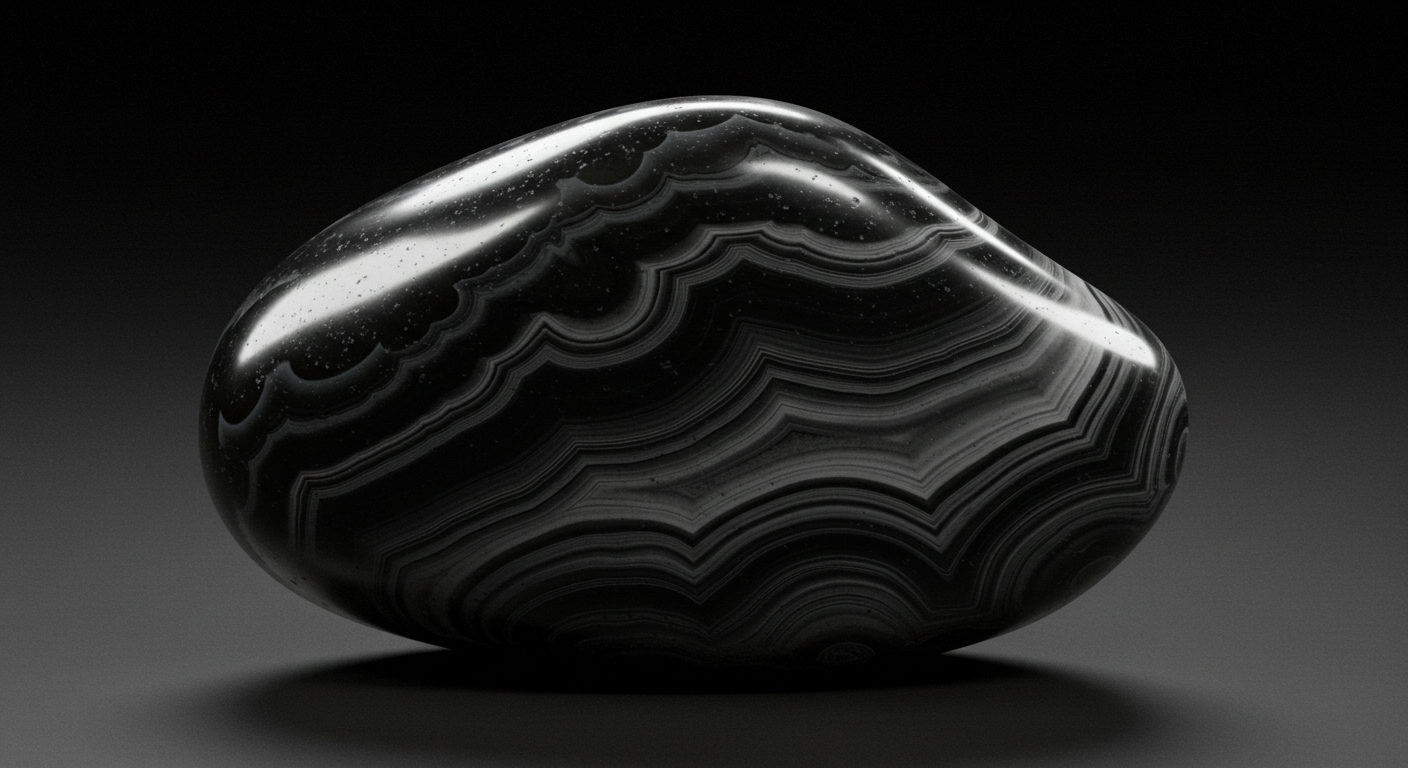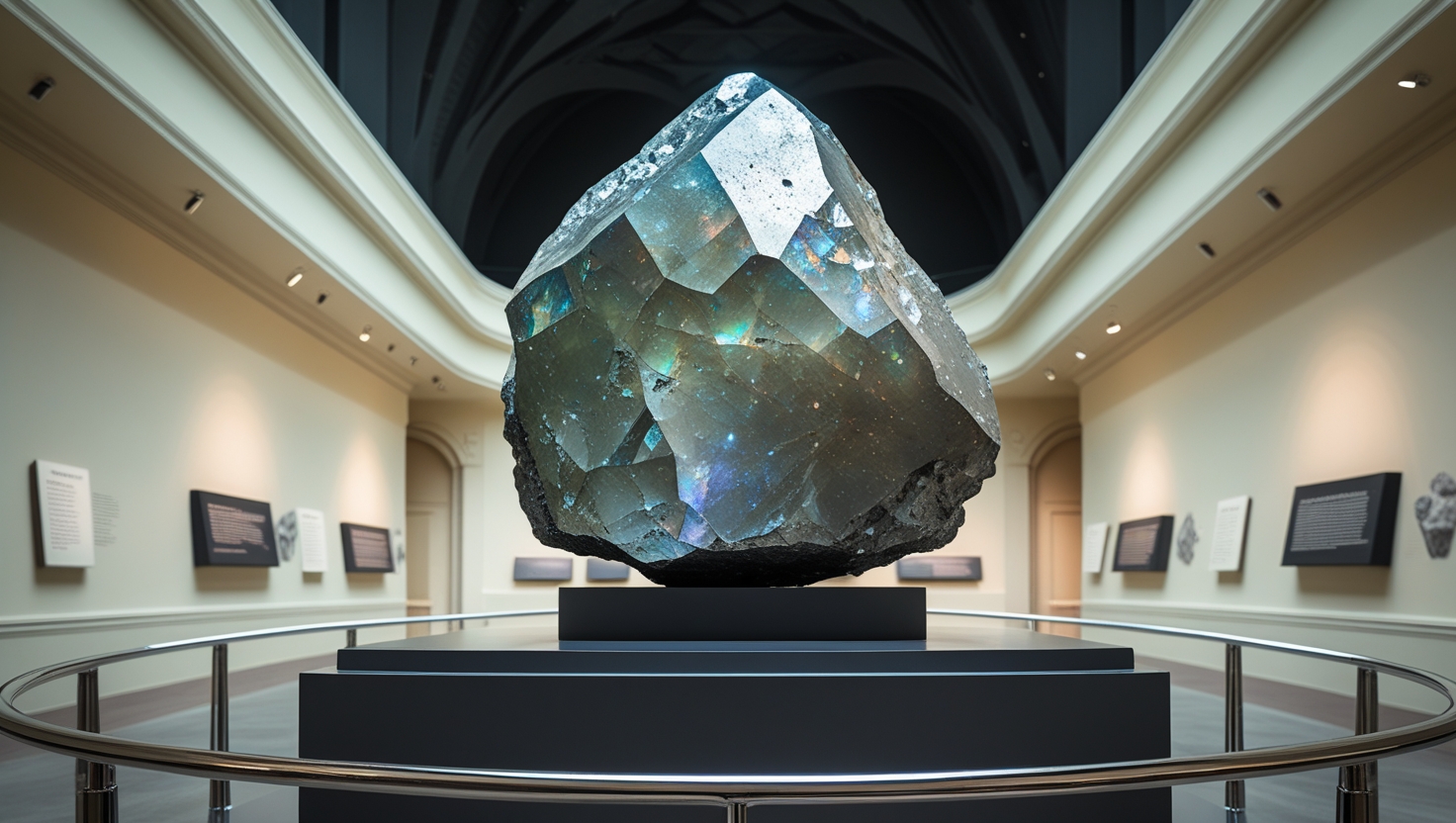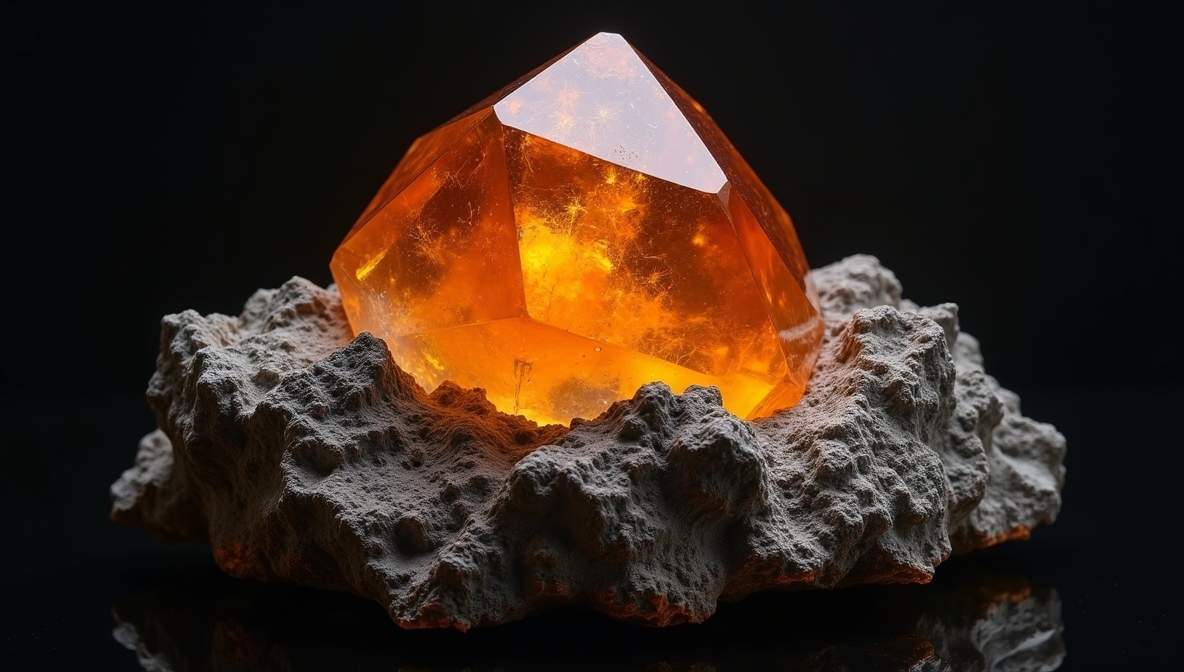See this incredible The Story of an Intense Green Fluorite Cube on White Matrix. Explore its intricate patterns and natural beauty.
Behold a wonder carved not by human hands, but by the patient, intricate processes of the Earth itself. Imagine a specimen that seems almost paradoxical: a form of striking, mathematical perfection, juxtaposed with a vibrant, organic color, all resting upon a seemingly chaotic, yet ultimately supportive, white mineral matrix. This is the captivating presence of a geometrically perfect, intense green fluorite cube perched upon its white mineral bed.
It is a piece that speaks volumes without uttering a sound – a silent conversation between geological forces, chemical reactions, and the sheer, unadulterated beauty that results when conditions align just right deep within the Earth’s crust. To gaze upon such a piece is to witness a microcosm of cosmic order manifested in stone, a vibrant jewel set against a stark, clean background.
Let’s delve into the layers of wonder held within this specific, breathtaking mineral specimen.
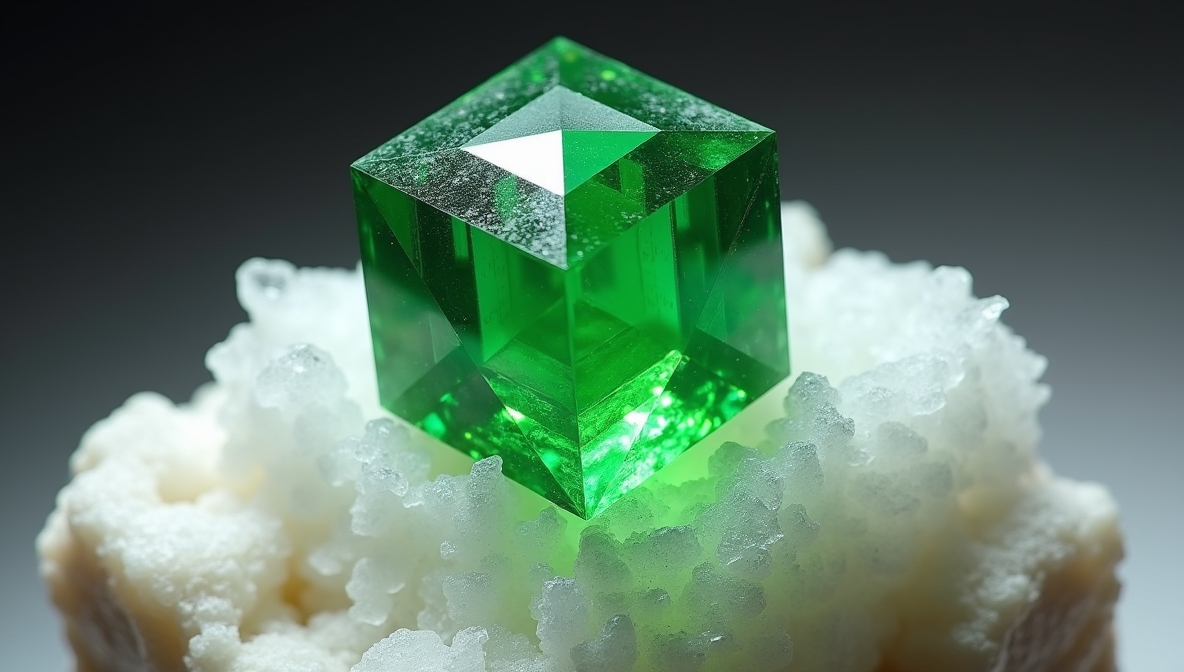
The Star: The Geometrically Perfect Green Cube
The eye is immediately drawn to the cube. It sits there, unapologetic in its precision, a stark geometric form in a world often defined by curves and irregularities. Its faces are flat planes, meeting at angles so crisp they seem drawn by a master mathematician. The edges are sharp, the corners true right angles. It is a testament to the underlying atomic order of the mineral itself.
Why a Cube? The Science of Crystallography
Fluorite (calcium fluoride, CaF₂) belongs to the cubic crystal system. This isn’t a random shape it decided to adopt; it’s a direct reflection of the way calcium and fluoride atoms arrange themselves in a repeating, three-dimensional pattern called a crystal lattice. For fluorite, this lattice is inherently cubic. As the mineral grows from a supersaturated solution of its constituent ions, these ions naturally fall into place, guided by electromagnetic forces, building outwards atom by atom, layer by layer, following the dictates of that internal cubic structure.

While many fluorite crystals exhibit cubic forms, achieving truly geometric perfection is a remarkable feat of nature. Factors like unrestricted growth space within a cavity, stable temperature and pressure conditions over long periods, and a consistent supply of pure fluids are necessary to allow the crystal to grow symmetrically and flawlessly. Any interruption – a sudden change in chemistry, a physical obstruction, or disturbance – can lead to distorted faces, stepped edges, or incomplete formation. The specimen in our focus, with its near-perfect cube, represents an ideal scenario played out over geological timescales. It is crystallography made manifest in its most elegant form.
The Color: An Intense Splash of Green Vitality
If the form speaks of order, the color speaks of life, energy, and intensity. Fluorite is famous for its wide spectrum of colors – purple, blue, yellow, clear, pink, and more. But green fluorite holds a special place, and intense green fluorite, like the cube described, is particularly prized.
The color in fluorite is usually caused by trace impurities within the crystal lattice or by structural defects. For green fluorite, common culprits include small amounts of rare earth elements like yttrium or organic compounds trapped during formation. These impurities absorb certain wavelengths of light and transmit others, resulting in the perception of green. The intensity of the green in this specific cube suggests a relatively high concentration of these color-inducing agents, or perhaps a unique arrangement within the lattice that maximizes light interaction.
This isn’t a pale, washed-out green. It is vibrant, deep, perhaps even glowing – a lush, rich hue that immediately grabs attention. It’s the color of deep forests, thriving moss, or the vitality of spring. The contrast between the stone’s non-organic, geometric structure and this organic, lively color is striking and deeply appealing. It creates a visual dialogue: the precision of physics meeting the vibrancy of chemistry.
The Foundation: The White Mineral Matrix
Supporting this emerald-like cube is the white mineral matrix. This isn’t just a display base added later; it’s the natural foundation upon which the fluorite crystal grew. The matrix is the host rock or the earlier-formed mineral lining the cavity where the hydrothermal fluids deposited the fluorite.
The white color of the matrix is crucial to the specimen’s aesthetic impact. White serves as a perfect backdrop, allowing the intense green of the cube to pop and demand attention. It emphasizes the purity of the green and highlights the crystal’s form by providing visual separation from surrounding rock or other minerals that might be present.
What is the white mineral? Without specific analysis, it could be several possibilities common in hydrothermal veins where fluorite is found:
- Quartz: Crystalline or massive quartz (milky quartz) is very common and often forms the walls of cavities.
- Calcite: Calcium carbonate, another common vein mineral, can form white crystals or massive layers.
- Barite: Barium sulfate can also form white, often platy or bladed crystals that could serve as a matrix.
- Other Minerals: Depending on the specific geological locality, other white minerals could be present.
Regardless of its exact composition, the white matrix provides context. It tells us that the fluorite didn’t form in isolation, but was part of a larger mineralizing event. Its texture might be rough, crystalline, granular, or massive, providing a tactile contrast to the smooth, flat faces of the fluorite cube. This contrast between the clean, precise crystal and the potentially more irregular, rough matrix adds another layer of visual interest and speaks to the dynamic environment of mineral formation – moments of chaotic deposition alongside moments of perfect, organized growth.
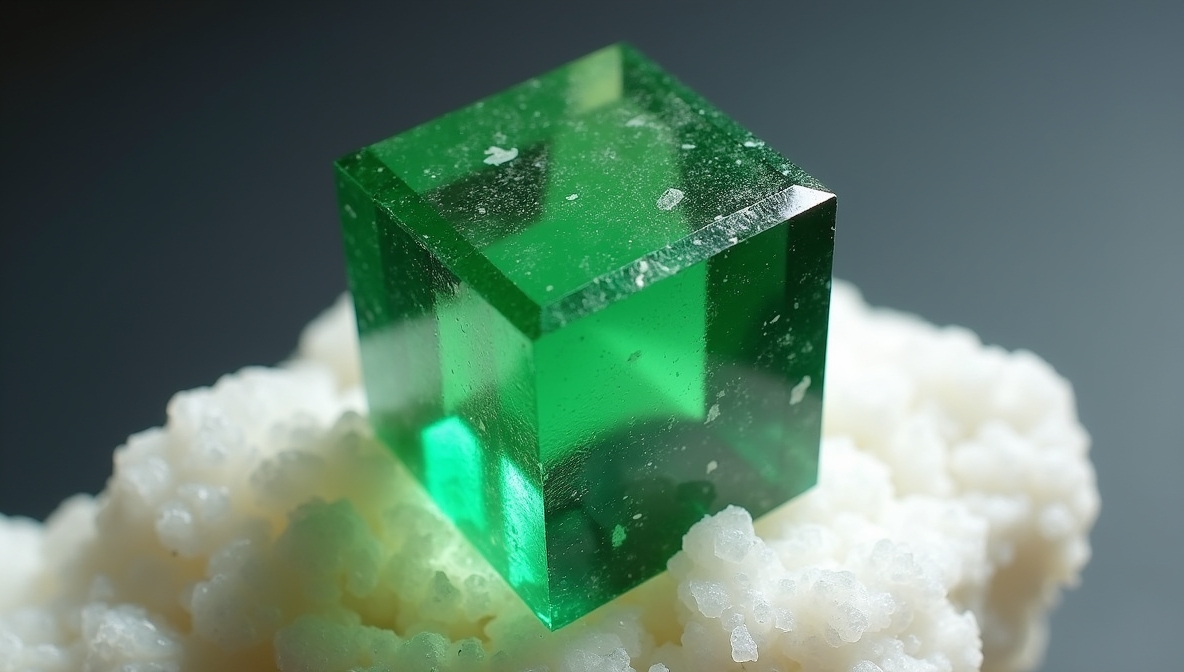
The Synergy: A Natural Sculpture of Contrast
The magic of this specimen lies in the synergy between the cube and the matrix. It’s not just a green fluorite cube; it’s a green fluorite cube on a white matrix. The matrix elevates the cube, both literally and aesthetically.
Think of it as a natural sculpture. The Earth provided the materials and the conditions. The cube grew, guided by its internal atomic code and bathed in mineral-rich fluids. It came to rest, or perhaps grew attached, to the surface of the already existing matrix minerals. The matrix isn’t just a base; it’s the stage, the canvas, the bedrock of the specimen’s existence.
The visual dynamic is powerful:
- Color Contrast: Intense green against pure white is one of the most impactful color combinations, immediately capturing the eye.
- Form Contrast: The severe, mathematical geometry of the cube against the more organic, possibly crystalline or granular texture of the matrix.
- Conceptual Contrast: The perfect, almost artificial-looking form of the cube arising naturally from the less defined, rougher matrix.
This specimen beautifully illustrates the interplay between order and chaos in nature, between precise crystalline growth and the irregular spaces they inhabit. It is a moment of structured beauty preserved within a more chaotic geological context.
The Deep Earth’s Laboratory: The Formation Story
Let’s piece together the likely history of this stunning piece. Millions of years ago, perhaps in a region of volcanic activity or tectonic uplift, fractures and cavities formed deep within the Earth’s crust. Hot, mineral-rich water – known as hydrothermal fluids – began to circulate through these cracks. These fluids dissolved elements from the surrounding rock and carried them along.
In this particular location, the fluids were rich in calcium (Ca) and fluoride (F), the building blocks of fluorite. They also contained trace amounts of the elements responsible for the green color and potentially the components of the white matrix (silica for quartz, calcium and carbonate for calcite, etc.).
As these fluids moved into a cavity, conditions began to change – perhaps the temperature dropped, or the pressure decreased, or the fluid chemistry shifted. These changes caused the dissolved minerals to become less soluble, and they began to precipitate out of the solution.
First, the minerals forming the white matrix likely began to crystallize, lining the walls or filling parts of the cavity. Then, at some point, with the white matrix providing nucleation sites (surfaces for new crystals to start growing on), the calcium and fluoride ions, along with the color-causing impurities, began to combine and deposit onto the surface of the matrix.
Atom by atom, following their internal programming, the fluorite grew, building its cubic structure. If the conditions remained stable and the supply of ingredients was consistent, and if the growing crystal was not obstructed, it could develop into a large, perfect cube like the one we admire. The intense green color was locked in as the crystal grew, incorporating the trace elements present in the fluid at that time.
This process wasn’t rapid; it occurred over geological time, perhaps thousands or even millions of years, layer upon invisible atomic layer, until the cavity was partially or fully filled with crystals like this one, resting upon their matrix beds.
From Deep Underground to Display Case: The Journey
The final chapter of this specimen’s story involves its discovery and extraction. Prospectors or miners, following veins of mineralization, may have stumbled upon this cavity filled with crystals. Careful work was then required to extract the specimen without damaging the delicate, perfect cube or its connection to the matrix. It’s a testament to the skill of the people who brought this piece of hidden beauty to the surface.
Once out of the ground, the specimen is typically cleaned to remove clay, iron stains, or other surface impurities, revealing the true color and form of the crystals and matrix. Unlike some minerals, well-formed fluorite crystals like this cube are rarely faceted or polished; their natural form is considered the peak of their beauty and scientific interest. The value lies in the natural perfection and presentation.
Now, it exists in the human realm – admired in a collection, displayed in a museum, or held as a personal treasure. It serves as a tangible link to the immense, slow-motion processes that shaped our planet.
More Than Just a Rock: Significance and Appreciation
Why does a mineral specimen like this captivate us so deeply?
- Natural Wonder: It is a perfect example of the Earth’s ability to produce objects of profound beauty and order through natural processes.
- Scientific Insight: It provides a direct visual lesson in crystallography, mineral formation, and geological chemistry.
- Aesthetic Appeal: The combination of precise form, vibrant color, and contrasting matrix is simply stunning to look at. It appeals to our innate appreciation for symmetry and beauty.
- Rarity: While fluorite is common, a geometrically perfect, intensely colored cube on an aesthetic matrix is far from common. Such specimens are sought after by collectors and museums.
- Connection to Earth: Holding or observing this piece connects us to the deep, hidden world beneath our feet and the vast stretches of geological time.
- Symbolism: The perfect cube can symbolize order, stability, structure, and logic, while the vibrant green represents life, growth, healing, and nature. Their combination might suggest finding order within the natural world or the structured growth of life itself.
In essence, this specimen is a natural sculpture that embodies a fascinating intersection of geology, chemistry, and physics, presented with breathtaking aesthetic flair.
Conclusion: A Gem of Geological Art
The geometrically perfect, intense green fluorite cube on a white mineral matrix is more than a geological curiosity; it is a masterpiece of natural art. From the atomic precision that dictated its cubic form to the slow infusion of trace elements that gifted it its vivid green hue, and finally to its emergence from the supportive embrace of the white matrix, every aspect of this specimen tells a story of Earth’s dynamic history.
